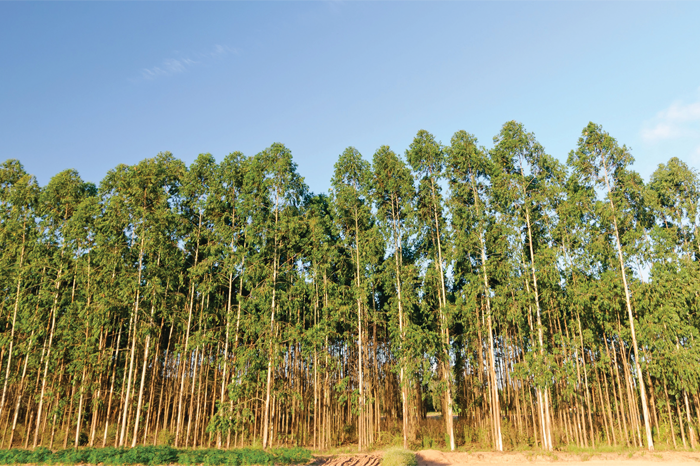IF THERE’S ONE THING local citrus growers are paying close attention to of late, it’s the concept of alternative crops. As citrus greening continues to threaten citrus crops and cause hardships for growers, researchers, business leaders, and farmers have devoted sharp attention to what other products they can grow besides citrus.
One product that’s causing a stir and attracting attention is the eucalyptus tree. Many may hear “eucalyptus” and think of Australia and koala bears. But here in Florida, the term is beginning to bring much to mind: the product can be used as an energy source, as mulch, and more. It’s been used as windbreaks to protect crops from wind damage, chemical drive, and airborne disease, but the current line of thinking is toward other advantages than protection of citrus trees.
Leading eucalyptus expert Dr. Don Rockwood says the fast-growing trees that have been developed for this state’s climate are tolerant to cold weather and do not need much maintenance — a big plus for growers of citrus, peach, and other crops that need a lot of attention.
Dr. Rockwood has spent decades studying the trees and has patented several varieties. They are ideal for Florida’s former citrus beds, he points out. “There’s just a kind of residue there that makes those lands more attractive than palmetto prairie kinds of soils, for example.”
“And eucalyptus has an established market for mulchwood throughout the eastern United States,” he adds. “Yet, there is the very real prospect of using fast-growing trees as an alternative energy.” Local grower Phillip Rucks says he is in agreement that eucalyptus has potential. Rucks planted 13,000 of the trees in Georgia several years ago, and a serious freeze killed all but 1,000 of them. While that might seem like bad news to many, Rucks was encouraged by the fact that 1,000 lived through a Georgia freeze — they are likely to survive Florida’s cold snaps. Dr. Rockwood confirms that varieties developed for Florida will indeed survive the chilliest temperatures. He has many patents on varieties of eucalyptus. “The cultivars were selected and bred to withstand our freezes,” he states.
And there are more pluses for the eucalyptus option. The trees take three to six years to reach harvest size, giving growers a much faster return on their investment. “When everything goes right, these trees can grow 15 to 20 feet a year,” he explains. “That is three to five times the rate of pine trees. And fast-growing trees can be harvested three times before they need replanting.”
It takes time to change the agricultural landscape, however. “In terms of using trees for variation crops, one issue is that there are changes necessary — and landowners are slow to change from whatever they have been doing to something else,” Dr. Rockwood says. “Another factor is that ag land prices are high now, and in order to make it a profitable venture, there needs to be several hundred acres.”
Grower Rucks supports the changes; they are needed to keep growers afloat. “We just have to work through it,” Rucks says. “Continue trying to keep an open mind, and look at something that’s going to fit in our climate.”
To attract businesses interested in turning the trees into an energy source, thousands of acres need to be in the ground, according to Dr. Rockwood. “With wood resources, there needs to be hundreds of thousands of tons of wood,” he says. “To attract a power plant, there needs to be quantity.” And local growers can’t produce the crops to do business with power plants located further away. “They need to be 50 to 60 miles from the plant,” he observes. Transportation costs would otherwise be too much.
Besides being a source of multiple uses, eucalyptus trees equal jobs. “For a community,” he concludes, “it would provide quite an economic boon.”
CREDIT
article by MARY TOOTHMAN

